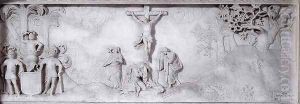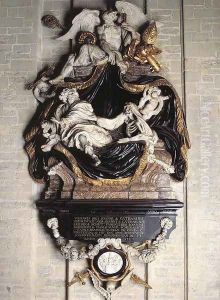Petrus Scheemaekers the Elder Paintings
Petrus Scheemaekers the Elder, born in 1660, was a prominent Flemish Baroque sculptor whose work significantly contributed to the development of sculpture in the Southern Netherlands during the late 17th and early 18th centuries. His artistic lineage was notable, with a family deeply rooted in the tradition of sculpture, which undoubtedly influenced his career path and development as an artist. Scheemaekers is particularly renowned for his funeral monuments and religious sculptures, which exhibit a remarkable blend of dynamic realism and emotional depth, characteristic of the Baroque style.
Scheemaekers' work was deeply influenced by the broader European Baroque movement, which was known for its dramatic use of light and shadow, intense emotional expression, and a sense of movement within the sculptures. His mastery in carving marble and stone allowed him to create pieces that were both technically impressive and deeply moving. Among his contributions, the funerary monuments stand out for their intricate detail and the poignant sense of piety and reflection they evoke in viewers.
Throughout his career, Petrus Scheemaekers the Elder worked on various commissions for churches and public spaces, leaving behind a legacy that would influence generations of sculptors in the Flemish region. His ability to capture the spiritual and emotional essence of his subjects made his work sought after in his time. Despite the prominence during his lifetime, detailed records of his commissions and works are scarce, which is often the case with artists of his era.
Scheemaekers passed away in 1714, but his artistic legacy lived on through his descendants, notably his son, Petrus Scheemaekers II, who continued the family tradition in sculpture. The Scheemaekers family, through their generations of work, contributed significantly to the artistic heritage of Flanders, cementing their place in the history of European art. Today, Petrus Scheemaekers the Elder's work is appreciated for its craftsmanship and the emotional depth it brings to the Baroque tradition of sculpture.

